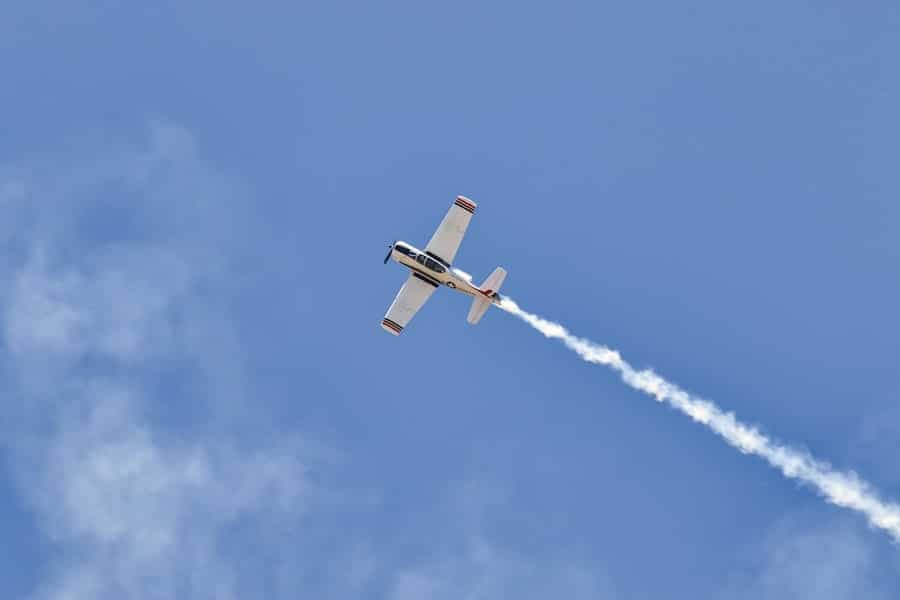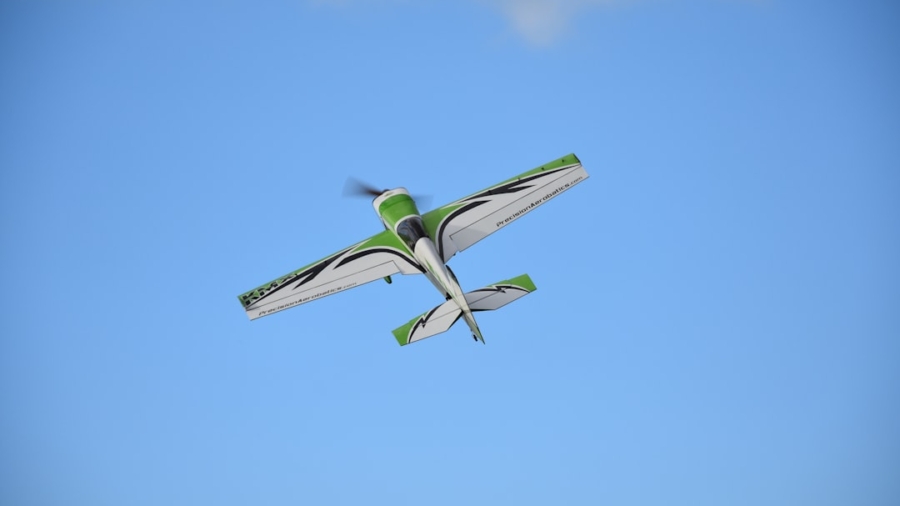Urban Air Mobility (UAM) represents a transformative shift in the way we envision transportation within metropolitan areas. As cities become increasingly congested, the demand for innovative solutions to alleviate traffic woes has never been more pressing. UAM encompasses a range of aerial transportation options, including electric vertical takeoff and landing (eVTOL) aircraft, drones, and air taxis, all designed to operate in urban environments.
This burgeoning sector aims to provide efficient, on-demand air travel that can significantly reduce travel times and enhance connectivity between urban centers and suburban areas. The concept of UAM is not merely a futuristic dream; it is rapidly becoming a reality, driven by advancements in technology and a growing recognition of the limitations of traditional ground-based transportation. As urban populations swell, the need for alternative modes of transport that can bypass terrestrial congestion is paramount.
UAM promises to revolutionize urban mobility by offering a new dimension of travel that is faster, more flexible, and potentially more sustainable than existing options. The integration of aerial vehicles into the urban landscape raises numerous questions about infrastructure, regulation, and societal acceptance, all of which are critical to the successful implementation of UAM systems.
Key Takeaways
- Urban Air Mobility (UAM) is a new concept that aims to revolutionize transportation in urban areas by using advanced aerospace technology and autonomous systems.
- Advancements in aerospace technology, such as electric propulsion and lightweight materials, are driving the development of UAM vehicles that are quieter, more efficient, and environmentally friendly.
- The integration of autonomous systems, including artificial intelligence and advanced sensors, is crucial for ensuring safe and efficient operation of UAM vehicles in complex urban environments.
- Developing the necessary infrastructure, including vertiports and charging stations, is essential for the successful implementation of UAM and requires collaboration between public and private sectors.
- UAM has the potential to reduce traffic congestion, lower carbon emissions, and improve air quality, making it a sustainable and environmentally friendly mode of transportation for the future.
Advancements in Aerospace Technology
The rapid evolution of aerospace technology has been a cornerstone in the development of Urban Air Mobility. Innovations in electric propulsion systems have paved the way for quieter, more efficient aircraft that are well-suited for urban environments. eVTOL aircraft, which utilize multiple rotors for vertical takeoff and landing, are at the forefront of this technological revolution.
Companies like Joby Aviation and Archer are developing aircraft that not only promise to reduce noise pollution but also offer significant reductions in operational costs compared to traditional helicopters. Moreover, advancements in battery technology are crucial for the viability of UAM. The shift towards electric power sources has led to the development of high-energy-density batteries that can support longer flight durations and greater payload capacities.
For instance, the introduction of solid-state batteries could potentially double the energy density compared to current lithium-ion technologies, enabling eVTOLs to operate over longer distances without the need for frequent recharging. This leap in battery performance is essential for making UAM a practical option for everyday commuters.
Integration of Autonomous Systems

The integration of autonomous systems into Urban Air Mobility is another pivotal aspect that could redefine urban transportation. Autonomous flight technology has advanced significantly, with companies like Volocopter and Boeing investing heavily in developing systems that can operate without human intervention. These systems rely on sophisticated algorithms, machine learning, and artificial intelligence to navigate complex urban environments safely.
The potential for fully autonomous air taxis could alleviate concerns about pilot shortages and reduce operational costs. However, the transition to autonomous UAM vehicles is not without challenges. Ensuring safety in densely populated areas requires robust fail-safe mechanisms and real-time data processing capabilities.
The development of advanced air traffic management systems will be essential to coordinate the movements of numerous aerial vehicles operating simultaneously in urban airspace. This integration will necessitate collaboration between aerospace manufacturers, software developers, and regulatory bodies to create a seamless operational framework that prioritizes safety while maximizing efficiency.
Infrastructure for Urban Air Mobility
The successful implementation of Urban Air Mobility hinges on the establishment of appropriate infrastructure to support aerial operations. Vertiports—dedicated landing and takeoff zones for eVTOLs—will be critical components of this infrastructure. These facilities must be strategically located throughout urban areas to facilitate easy access for passengers while minimizing noise and safety concerns for surrounding communities.
The design of vertiports will need to accommodate not only the physical requirements of eVTOLs but also integrate seamlessly with existing transportation networks, such as public transit systems and ride-sharing services. In addition to vertiports, the development of charging stations for electric aircraft will be vital. As eVTOLs become more prevalent, a network of charging infrastructure must be established to ensure that these vehicles can operate efficiently throughout the day.
This infrastructure will require collaboration between city planners, utility companies, and aviation authorities to create a comprehensive system that supports the unique needs of aerial transportation while addressing potential environmental impacts.
Environmental Impact and Sustainability
One of the most compelling arguments for Urban Air Mobility is its potential to contribute to environmental sustainability. Traditional ground transportation is a significant contributor to urban air pollution and greenhouse gas emissions. In contrast, eVTOL aircraft powered by electricity have the potential to operate with zero emissions at the point of use, significantly reducing the carbon footprint associated with urban travel.
Furthermore, as cities increasingly adopt renewable energy sources for electricity generation, the overall environmental impact of UAM could be minimized even further.
The production and disposal of batteries used in electric aircraft pose challenges related to resource extraction and waste management.
Sustainable practices must be implemented throughout the lifecycle of these technologies to ensure that they do not inadvertently contribute to environmental degradation. Additionally, noise pollution remains a concern; while eVTOLs are generally quieter than traditional helicopters, their widespread use could still impact urban soundscapes. Addressing these issues will require ongoing research and collaboration among stakeholders in the aerospace industry, environmental organizations, and urban planners.
Regulatory and Safety Considerations

The regulatory landscape surrounding Urban Air Mobility is complex and still evolving. As UAM technologies advance, regulatory bodies must develop frameworks that ensure safety while fostering innovation. The Federal Aviation Administration (FAA) in the United States and similar organizations worldwide are tasked with creating regulations that govern airspace usage, vehicle certification, pilot training, and operational standards for UAM vehicles.
These regulations must strike a balance between enabling rapid technological advancement and ensuring public safety. Safety considerations are paramount in the development of UAM systems. The potential for accidents or malfunctions in densely populated areas raises significant concerns among regulators and the public alike.
Additionally, public acceptance will play a crucial role in shaping regulatory approaches; transparency in safety measures and community engagement will be essential in building trust among potential users.
Economic and Social Implications
The emergence of Urban Air Mobility has far-reaching economic implications that extend beyond mere transportation efficiency. The UAM sector has the potential to create thousands of jobs across various industries, including aerospace engineering, manufacturing, maintenance, and operations. As companies invest in developing eVTOL technologies and supporting infrastructure, new opportunities will arise for skilled workers in these fields.
Furthermore, UAM could stimulate local economies by enhancing access to jobs and services across urban areas. Socially, UAM has the potential to reshape how individuals perceive mobility within cities. By providing an alternative mode of transport that bypasses ground congestion, UAM could democratize access to urban resources and opportunities.
However, it is crucial to address equity concerns; if UAM services are priced beyond the reach of average citizens, they may exacerbate existing inequalities rather than alleviate them. Policymakers must consider how to make UAM accessible to diverse populations while ensuring that it complements existing public transportation systems rather than replacing them.
Future Outlook for Urban Air Mobility
The future outlook for Urban Air Mobility is both promising and uncertain as various factors converge to shape its trajectory. Continued advancements in technology will likely lead to more efficient and capable aerial vehicles capable of meeting the demands of urban environments. As public acceptance grows and regulatory frameworks mature, we may witness the first commercial operations of air taxis within the next few years.
However, challenges remain on multiple fronts—ranging from infrastructure development to environmental sustainability—that must be addressed for UAM to reach its full potential. Collaboration among stakeholders—including government agencies, private companies, and communities—will be essential in navigating these complexities. As cities continue to evolve and adapt to changing mobility needs, Urban Air Mobility stands poised to play a pivotal role in shaping the future of urban transportation, offering a glimpse into a world where aerial travel becomes an integral part of daily life.
In the rapidly evolving landscape of urban air mobility, aerospace technology is playing a pivotal role in shaping the future of transportation. As cities become more congested, the need for innovative solutions to urban mobility challenges becomes increasingly urgent. One related article that delves into the technological advancements influencing various sectors is How to Choose Smartphone for Chief Executive. This article explores the critical factors in selecting cutting-edge technology, which parallels the considerations in developing advanced aerospace solutions for urban air mobility. Both fields require a keen understanding of technological capabilities and user needs to drive future innovations effectively.
FAQs
What is urban air mobility (UAM)?
Urban air mobility (UAM) refers to the transportation of people and goods in urban and suburban environments using aerial vehicles such as drones and air taxis.
How is aerospace technology driving future urban air mobility?
Aerospace technology is driving future urban air mobility by developing advanced electric propulsion systems, autonomous flight control systems, and infrastructure for air traffic management in urban environments.
What are some examples of aerospace technologies being used in urban air mobility?
Examples of aerospace technologies being used in urban air mobility include electric vertical takeoff and landing (eVTOL) aircraft, advanced battery systems, and advanced flight control software.
What are the potential benefits of urban air mobility?
Potential benefits of urban air mobility include reduced traffic congestion, faster transportation, and improved access to remote or hard-to-reach areas.
What are the challenges facing the development of urban air mobility?
Challenges facing the development of urban air mobility include regulatory hurdles, infrastructure development, public acceptance, and safety and security concerns.

